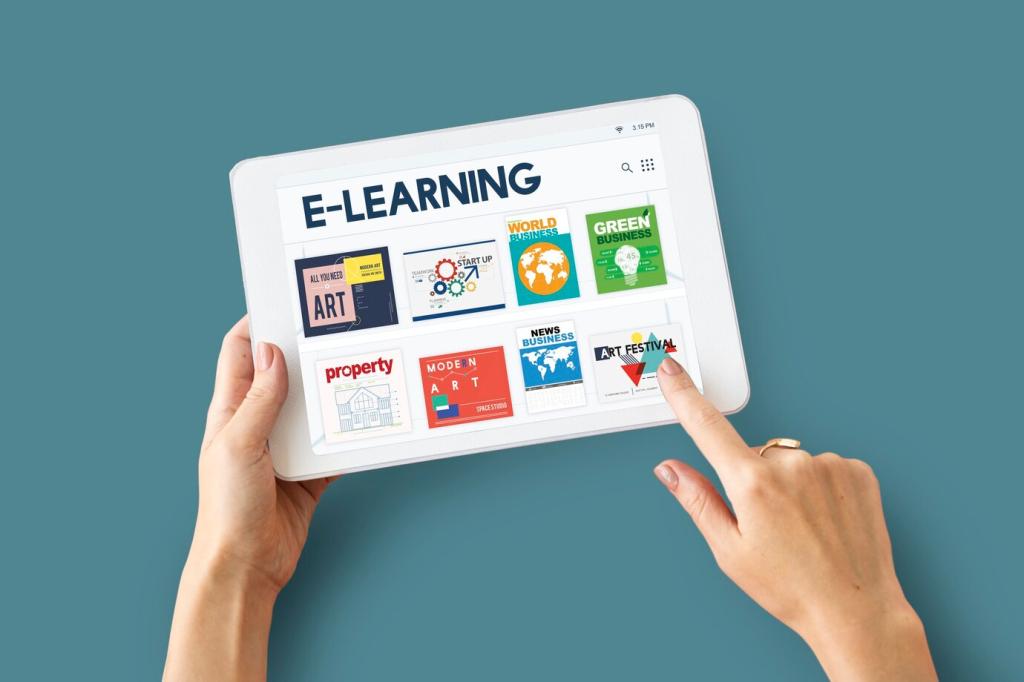
Strategies for Maintaining Student Motivation in Digital Learning
Chosen theme: Strategies for Maintaining Student Motivation in Digital Learning. Welcome to a space where practical tactics meet real stories, helping educators spark curiosity, sustain momentum, and celebrate learning wins—one purposeful click at a time. Subscribe for new ideas, and share your own classroom breakthroughs.
The Psychology of Motivation in Online Spaces

Intrinsic motivation grows when tasks feel meaningful and appropriately challenging, while extrinsic motivation can spark momentum with clear rewards and acknowledgment. Blend both thoughtfully, invite voice and choice, and ask students to set intentions. Share your approach in the comments and inspire fellow educators.
Designing Structure That Sustains Momentum
Post a one-page roadmap every Monday with goals, due dates, and time estimates. Pair it with a student-owned checklist and color-coded milestones. Encourage learners to reflect on their plan midweek. Drop a comment with your favorite roadmap template and help peers streamline their workflow.
Designing Structure That Sustains Momentum
Keep a steady cadence—launch, explore, practice, reflect—while letting students choose how they demonstrate mastery. Predictability lowers anxiety; flexibility invites ownership. Build in catch-up windows and optional enrichment. How do you balance rigor and choice? Subscribe to receive proven schedules from diverse subject areas.
Designing Structure That Sustains Momentum
Start with a gentle tech check, a low-stakes community survey, and a quick-win activity to guarantee early success. Model platform navigation live, then provide a replay. Ask students to post one strategy they use to stay organized. Share yours below and crowdsource a motivation starter kit.

Community and Interaction as Motivation Engines
Begin sessions with a question that matters—“What energized you this week?”—and a quick chat waterfall. Use names, celebrate progress, and weave student examples into mini-lessons. Simple warmth lowers the barrier to participation. Tell us your go-to opener, and let’s build a shared library.
Community and Interaction as Motivation Engines
Structure small groups with rotating roles, clear deliverables, and visible timelines. Provide collaboration norms and an exit ticket capturing contributions. Accountability protects trust; collaboration fuels belonging. What group protocols keep your learners engaged online? Comment to compare notes and download a role card template.
Goal Setting and Making Progress Visible

Personalized SMART Goals That Stick
Guide learners to set specific, measurable, attainable, relevant, time-bound goals linked to standards and interests. Revisit goals weekly in short conferences, celebrating micro-wins. Invite families to comment on progress. What reflection questions work best for you? Add them below to help others get started.

Dashboards, Streaks, and Micro-Wins
Create simple progress dashboards with color cues and milestone badges for effort, not just outcomes. Recognize streaks for consistent practice, not speed. Micro-wins compound into resilience. Curious about tools that make dashboards easy? Subscribe for our curated list and implementation walkthroughs.

Reflection, Revision, and Public Celebrations
Build cycles where students revise work after feedback and narrate their learning moves. Host brief showcases featuring before-and-after artifacts. Public celebration normalizes iteration. How do you spotlight growth without pressure? Share your approach and help colleagues celebrate progress with care.

Badges and Levels That Mean Something
Design badges tied to specific competencies and evidence. Levels unlock new challenges, not just points. Invite students to propose badge criteria, deepening buy-in. Which badge fuels the most effort in your course? Comment with examples and inspire a more meaningful reward system.
Narrative Quests Aligned to Curriculum
Wrap units in a story world—scientists solving a climate mystery, historians decoding letters—so tasks advance a shared mission. Narrative gives context and stakes. Want starter story arcs? Subscribe for templates that align narratives with standards and assessment rubrics.
Healthy Competition and Cooperative Wins
Blend team quests with individual mastery to avoid demotivating comparisons. Spotlight collaboration points and peer coaching. Rotate captains to distribute leadership opportunities. How do you keep competition kind and productive? Share your safeguards and help peers build inclusive game dynamics.

Aim for short turnaround with focused comments tied to criteria and one actionable next step. Use codes for patterns and link exemplars. Students should know exactly how to improve. What feedback phrases resonate? Share a few to strengthen our collective toolkit.

A thirty-second audio or video note can communicate warmth and nuance text often misses. Layer timestamps on drafts to anchor suggestions. Students report feeling seen and supported. Ready to try it? Subscribe for quick tech guides and sample scripts to get started.

Offer multiple formats—podcasts, infographics, simulations—paired with common rubrics. Choice invites students to lean into strengths without lowering rigor. Ask them to explain why their format best shows mastery. Post your favorite alternative assessment idea and help others diversify options.
Managing Cognitive Load and Screen Fatigue
Chunk lessons, alternate modalities, and set screen breaks with stretch prompts. Offer downloadable materials and offline practice. Clear visuals reduce noise and confusion. What pacing strategies keep your students energized? Share your timing tips to help others craft humane schedules.
Universal Design for Learning in Action
Provide multiple means of engagement, representation, and expression. Caption videos, add transcripts, and make navigation keyboard-friendly. Anticipate variability instead of retrofitting accommodations. Which UDL tweak had the biggest impact for you? Comment and subscribe for monthly UDL checklists.
Partnering with Families and Caregivers
Offer concise updates, share goals in plain language, and invite feedback on home realities. Flexible deadlines acknowledge context without diluting standards. Families become allies when communication is transparent. What message template has helped you most? Share it to strengthen our community’s partnership.
